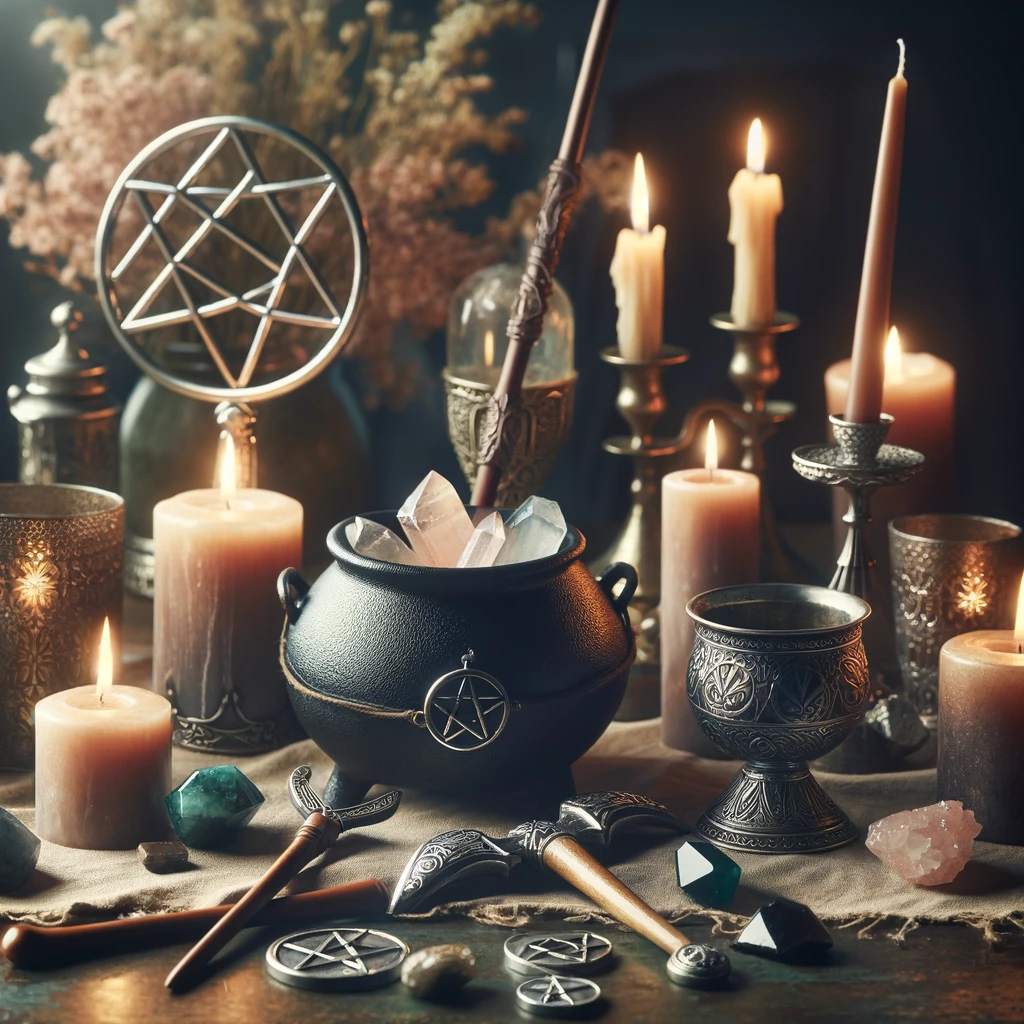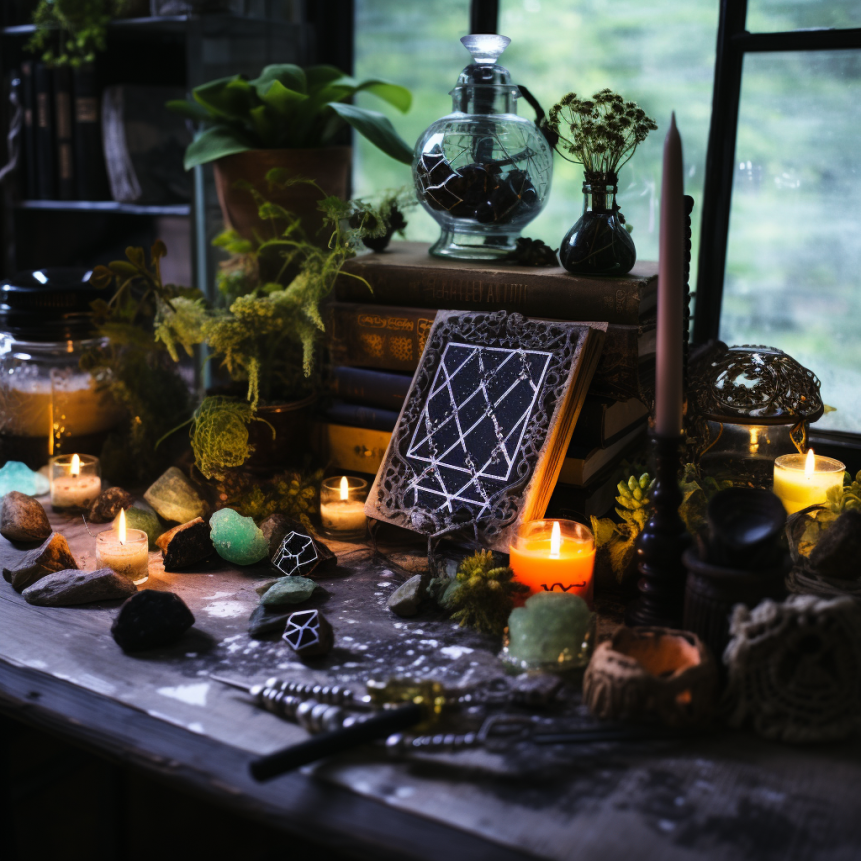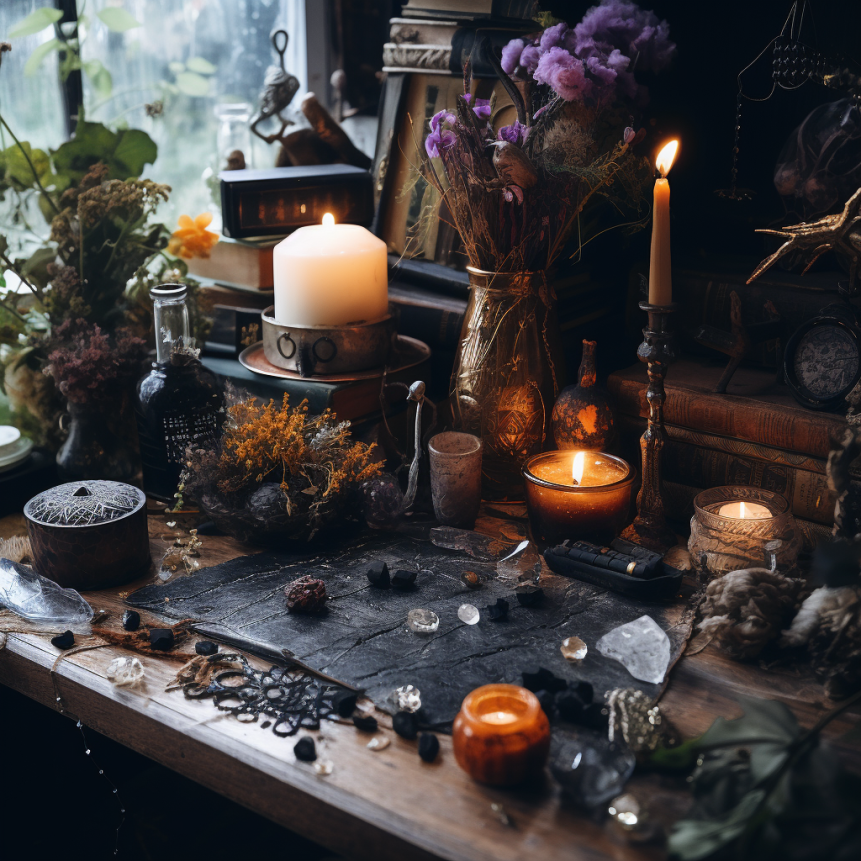
An altar is a sacred space, deliberately set up to honor, worship, connect with, or invite a sense of the spiritual into your daily life. It acts as a focal point for religious or spiritual activities, such as prayer, meditation, or rituals. Often a personal and intimate space, an altar reflects the beliefs, intentions, and desires of the person who creates it.
In various spiritual traditions, an altar holds immense significance. It’s often seen as a portal to the divine or the metaphysical world—a place where the veil between the earthly and the spiritual is thin. For example, in Pagan and Wiccan practices, an altar is not just a physical spot, but a symbol of their connection to the divine and the elements of nature: Earth, Air, Fire, Water, and sometimes Spirit. It’s a place to practice altar magic, make altar offerings, and perform ritual altar work respective to one’s spiritual path.
The Wheel of the Year is a spiritual and ritual calendar used by many Pagans, Wiccans, and other Earth-based spiritualities. It marks the changing seasons and the agricultural cycle, with each turn of the wheel representing a sabbat or holiday. These sabbats celebrate the moon phases, sun phases, and the cycle of life, death, and rebirth. The eight sabbats include Yule, Imbolc, Ostara, Beltane, Litha, Lammas, Mabon, and Samhain—each honoring a different aspect of nature, life, and the divine.
In the forthcoming sections, this article will explore how to set up an altar attuned to the Wheel of the Year. This includes aligning with the sabbats, integrating the five elements, and personalizing your practice for spiritual growth and connection with nature.
Whether you’re new to these traditions or a seasoned practitioner looking to refine your altar setup, this guide will offer insights into creating a space that embodies the cycles of nature and supports your spiritual journey.
Setting up an altar in harmony with the Wheel of the Year brings numerous benefits, reinforcing one’s spiritual path and deepening the connection with the ever-changing flow of life. Here are some key advantages:
When setting up an altar for the Wheel of the Year, consider these factors in choosing the appropriate space:
For each turn of the Wheel, consider including items that correspond to the current sabbat. Here’s a brief overview:
| Sabbat | Seasonal Items |
|---|---|
| Yule | Evergreens, holly, candles |
| Imbolc | Brigid’s cross, white flowers, candles |
| Ostara | Eggs, rabbit representation, spring flowers |
| Beltane | Ribbons, Maypole symbolism, blossoms |
| Litha | Sun imagery, summer fruits, flowers |
| Lammas | Bread, grains, harvest tools |
| Mabon | Autumn leaves, fruits, cornucopia |
| Samhain | Pumpkins, ancestor photos, cauldron |

Elements are central in Pagan and Wiccan practices:
| Element | Items |
|---|---|
| Earth | Crystals, stones, salt, pentacle |
| Air | Feathers, incense, wand |
| Fire | Candles, athame, images of the sun |
| Water | Chalice, bowl of water, seashells |
| Spirit (optional) | Central deity representation, ankh or similar symbol |
Once you have your items, it’s time to arrange your altar:

To maintain the integrity of your altar space:

A balanced altar integrates all five elements, encouraging harmony and holistic spirituality:

Whether you’re celebrating Yule in the Southwest with its unique local customs or observing the balance of light and dark at Mabon, your altar is a living testament to the ever-turning Wheel. It’s a sacred space that evolves with the seasons and grows with your spiritual journey.
From choosing the right space to selecting and arranging meaningful items, these practices foster a connection to nature and the spiritual realm, offering a place for intention setting, gratitude, and manifestation.
For those seeking to deepen their knowledge or expand their spiritual practice, here are a few resources to explore: